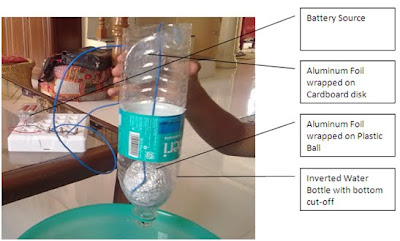I am sure everyone ponders over this question at some point in life. A child in school probably thinks of in-class time as a waste of time, considering that she has a lot of exciting things to do outside the four walls. A teacher in the same classroom is concerned about completing the prescribed content and schedule within the limits of time. The parent at home is mostly at ease with the fact that the child is in school while he goes on with his daily chores.
The one entity that gets impacted more than anyone else, and that, unfortunately, has the least power to influence the whole process, is the Society. The human civilization has, over the ages, come to terms with the fantasy that education (or, simply, bringing up a child) is an individual's responsibility. To be fair, states do put in a lot of emphasis on making their presence felt by controlling the essentials, namely, the finances and the "rules of the game".
What happens at the end of one's education is something that hits the society like a fireball. You get people who don't want to work on something, but they must- for whatever reasons! You also get people who are not able to cope with the real-world pressures and display behaviours that don't exactly gel well with others. The education that was supposed to produce "good human beings" suddenly begins to look as if it had all the right things in place, yet without a heart. In some countries, I am told, schools begin with social etiquettes and then with the alphabet. I wonder if they "fail" a child for not passing the first phase. What does a child do if she can't fathom the "selfishness" in her demanding the cookie of her brother? Or what does a teacher do on seeing a "hyper-active" child trying to jump over another child in the class and hurting himself in the process?
Do we really have a choice to not make good human beings more than anything else? And who should be doing this more than anyone else in the whole cast? Should we hold someone else accountable when a young male in the streets makes obscene overtures towards a girl? Or when an adult hits a child at the roadside because the child was "tampering" with this expensive car's side-view mirror? Or when a religious "jagrata" in the neighbourhood keeps you from sleeping peacefully for the whole night?
I fantasize about a day when brain-mapping technology would advance to a level when it identifies a suspect behaviour in a child at the age of four and provides help to its hapless (and often, defensive) parents. Until then, we need to help the society in bringing up the right next generation into its fold by giving preference to "bringing up" than "educating".
The one entity that gets impacted more than anyone else, and that, unfortunately, has the least power to influence the whole process, is the Society. The human civilization has, over the ages, come to terms with the fantasy that education (or, simply, bringing up a child) is an individual's responsibility. To be fair, states do put in a lot of emphasis on making their presence felt by controlling the essentials, namely, the finances and the "rules of the game".
What happens at the end of one's education is something that hits the society like a fireball. You get people who don't want to work on something, but they must- for whatever reasons! You also get people who are not able to cope with the real-world pressures and display behaviours that don't exactly gel well with others. The education that was supposed to produce "good human beings" suddenly begins to look as if it had all the right things in place, yet without a heart. In some countries, I am told, schools begin with social etiquettes and then with the alphabet. I wonder if they "fail" a child for not passing the first phase. What does a child do if she can't fathom the "selfishness" in her demanding the cookie of her brother? Or what does a teacher do on seeing a "hyper-active" child trying to jump over another child in the class and hurting himself in the process?
Do we really have a choice to not make good human beings more than anything else? And who should be doing this more than anyone else in the whole cast? Should we hold someone else accountable when a young male in the streets makes obscene overtures towards a girl? Or when an adult hits a child at the roadside because the child was "tampering" with this expensive car's side-view mirror? Or when a religious "jagrata" in the neighbourhood keeps you from sleeping peacefully for the whole night?
I fantasize about a day when brain-mapping technology would advance to a level when it identifies a suspect behaviour in a child at the age of four and provides help to its hapless (and often, defensive) parents. Until then, we need to help the society in bringing up the right next generation into its fold by giving preference to "bringing up" than "educating".








